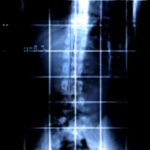Affecting nearly one million children in the United States, scoliosis is a growing concern among many parents, educators and healthcare professionals. While not considered a disease, scoliosis is a common condition among children with a familial history of scoliosis or other abnormal bone growth development. Unfortunately, in many cases, scoliosis is not diagnosed promptly resulting in progression into adolescence and, thus, a impaired physicial development. As parents, understanding the symptoms of scoliosis and the scoliosis treatment options, from bracing to surgery, is crucial to ensuring proper child growth and development.
Scoliosis is a common screening examination for school age children, often performed by the child’s pediatrician in addition to a healthcare professional within the educational system. As a curvature of the spine, childhood scoliosis, is often misdiagnosed by parents and, frequently, confirmed initially by the school healthcare professional with recommendation for pediatric follow up. Through the dual examination process, the pelvis is examined to determine if scoliosis may be present. Fortunately, some parents recognize a potential growth defect, such as scoliosis, during regular growth and development when the child’s right shoulder appears to be out of line with the rest of the body. Oftentimes, this is noticed by the parent when the child is dressing for school when clothes are noticeably not fitted correctly. When positively diagnosed, the next step is to determine the scoliosis treatment option most appropriate for the child.
While surgical options for children with scoliosis are serious medical procedures, this is a consideration parents will be required to make. When discussing scoliosis treatment options with your child’s pediatrician, open discussion should address the need for surgery, at some point in the lifetime, to ensure the proper treatment plan is outlined as the timing of surgery, if needed, is crucial. If the child’s activities of daily living are impaired and the curvature is greater than 50 degrees, surgery may be indicated immediately. However, if the scoliosis has not progressed to this level, before considering surgical options, alternative treatments, such as bracing, may be considered.
Bracing for children afflicted with scoliosis is commonly performed when the curvature of the spine reaches 25 to 40 degrees. Bracing is considered an orthotic appliance which is custom fitted to fit the child. While bracing will not improve the curvature of the spine, associated with scoliosis, it may impede the progression of the condition. As a general rule, upon reaching adolescence, most children will not longer require bracing for scoliosis as the spine will generally discontinue the process of curvature upon attainment of puberty and maturity. However, in young children, when diagnosed, bracing is a feasible option to slow the progression of the curvature and, possibly, negate the scoliosis surgery.
As parents, understanding the complex nature of scoliosis, the methods for early diagnosis, will provide for a more effective treatment plan. In most scoliosis cases, when diagnosed early, the use of bracing may negate the need for surgery as your child develops. For more information regarding scoliosis, visit www.iscoliosis.com.



